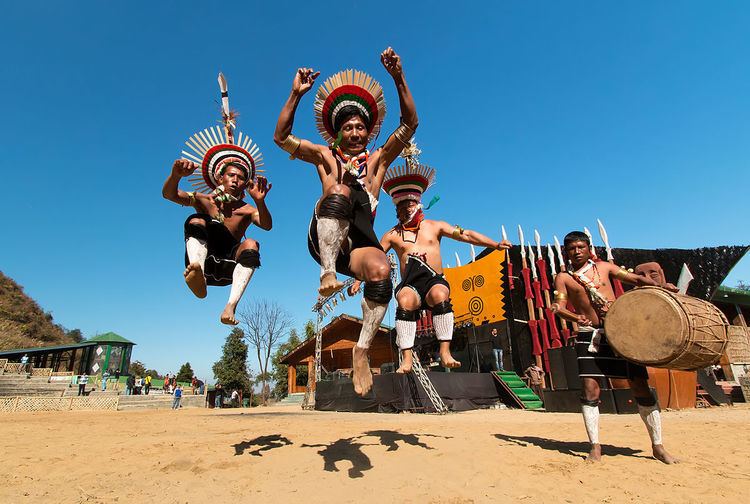Official name Hornbill Festival Type Cultural Frequency Annually | Observed by Nagas Date 1st - 10th December | |
 | ||
Significance To revive, protect, sustain, and promote the richness of the Naga heritage and traditions. | ||
The Hornbill festival is a celebration held every year from 1st - 10th December, in Nagaland, North-east India. It is also called as the 'Festival of Festivals'.
Contents
Background
The state of Nagaland is home to several tribes, which have their own distinct festivals. More than 60% of the population of Nagaland depends on agriculture and therefore most of their festivals revolve around agriculture. The Nagas consider their festivals sacred and so participation in these festivals is essential.
To encourage inter-tribal interaction and to promote cultural heritage of Nagaland, the Government of Nagaland organizes the Hornbill Festival every year in the first week of December. The first festival was held in the year 2000.
The festival is named after the Indian hornbill, the large and colourful forest bird which is displayed in folklore in most of the state’s tribes.
Celebrations
Organized by the State Tourism and Art & Culture Departments, Hornbill Festival showcases a mélange of cultural displays under one roof. This festival usually takes place between the 1st and the 7th of December every year in Kohima.
Hornbill Festival is held at Naga Heritage Village, Kisama which is about 12 km from Kohima. All the tribes of Nagaland take part in this festival. The aim of the festival is to revive and protect the rich culture of Nagaland and display its extravaganza and traditions.
For visitors it means a closer understanding of the people and culture of Nagaland, and an opportunity to experience the food, songs, dances and customs of Nagaland.
Festival activities
The week-long festival unites one and all in Nagaland and people enjoy the colourful performances, crafts, sports, food fairs, games and ceremonies. Traditional arts which include paintings, wood carvings, and sculptures are also on display.
Festival highlights include the Traditional Naga Morungs Exhibition and sale of Arts and Crafts, Food Stalls, Herbal Medicine Stalls, Flower shows and sales, Cultural Medley - songs and dances, Fashion shows, Beauty Contest, Traditional Archery, Naga wrestling, Indigenous Games, and Musical concert.
The Hornbill Festival provides a colourful mixture of dances, performances, crafts, parades, games, sports, food fairs and religious ceremonies. The festival both exposes the culture and tradition of tribal peoples, and reinforces Nagaland’s identity as a unique state in India’s federal union.
Traditional arts are also featured, with paintings, wood carvings and sculptures by modern Naga artists on display. Naga troupes sing folk songs, perform traditional dances and play indigenous games and sports. In the evenings a programme of music concerts, catering for all tastes, ensure that the festive spirit continues through the night. One of the major highlights of this festival is the Hornbill International Rock Festival that is held at Indira Gandhi Stadium and local and international rock bands perform here.
